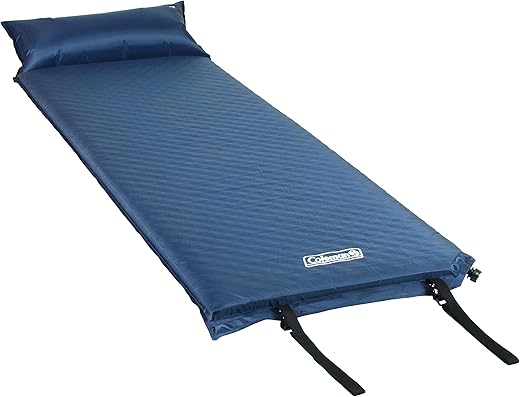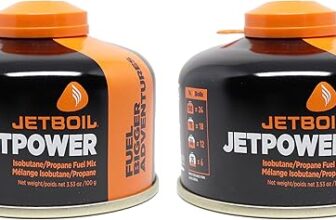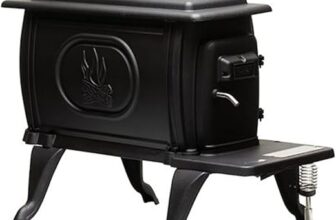
When it comes to choosing the right sleeping pad for outdoor adventures, two popular options stand out: the Coleman Self-Inflating Pad and the KAMUI Inflating Sleeping Pad. Both products cater to campers seeking comfort and ease of use, but each brings unique features and design philosophies to the table. This comparison aims to explore the material quality, inflation mechanisms, comfort levels, and portability of both pads, helping potential buyers make an informed decision based on their specific camping needs.
Outdoor Comfort

The Coleman Self-Inflating Sleeping Pad offers added cushioning and comfort for camping or traveling, featuring a soft design that eliminates the need for an air pump with its self-inflating mechanism. Its durable construction and quick deflation capability make it a practical choice for outdoor enthusiasts.
Camping Comfort

The KAMUI Self Inflating Sleeping Pad offers a comfortable and durable solution for tent and family camping with its 2-inch thick high rebound foam and R-value of 5.7, ensuring excellent insulation and support. Its design allows for easy connectivity with multiple pads, making it ideal for groups seeking a seamless sleeping experience.
Coleman Self-Inflating Pad
Thickness
2.5 inches
Weight
Not specified, but lightweight
R-Value (Insulation)
Not specified
Connection Capability
Not connectable with other pads
Material Durability
Durable polyester shell
KAMUI Inflating Sleeping Pad
Thickness
2 inches
Weight
3.5 lbs
R-Value (Insulation)
5.7
Connection Capability
Connectable horizontally and vertically
Material Durability
190T polyester fabric
Coleman Self-Inflating Pad
KAMUI Inflating Sleeping Pad
Coleman Self-Inflating Pad
KAMUI Inflating Sleeping Pad
Side-by-side comparison


Unique Selling Points (USPs)
Coleman Self-Inflating Sleeping Pad
- Integrated Pillow: Offers added comfort without extra bulk.
- Self-Inflating: No air pump required, simplifying setup.
- Extra Thickness: Provides 3 inches of padding for better support.
KAMUI Self Inflating Sleeping Pad
- Connectable to Other Mats: Ideal for family camping where more space is desired.
- Easy Inflation Control: Users can adjust firmness via air valve.
- Portable: Includes a carrying bag for easy transportation.
Similarities
- Both products are designed for outdoor use and are self-inflating.
- Each mattress features integrated pillows for added comfort.
- Both sleeping pads are made of durable, lightweight materials and are suitable for camping and travel.
Pros and Cons
Coleman Self-Inflating Sleeping Pad
- Pros:
- Extra 3-inch thickness for superior comfort.
- Requires no air pump to inflate.
- Quick and straightforward setup.
- Cons:
- Not connectable with other pads for expanded space.
- Slightly bulkier when rolled up due to thickness.
KAMUI Self Inflating Sleeping Pad
- Pros:
- Connectable feature suitable for larger groups.
- Adjustable firmness allows for customizable comfort.
- Durable and lightweight, making it very portable.
- Cons:
- Thinner than Coleman, which could be less comfortable for some.
- Slightly heavier than its competitor.
Conclusive Assessment
No clear outright winner emerges between these two sleeping pads. Each has its strengths tailored to different user preferences:
- Coleman Self-Inflating Sleeping Pad excels in comfort due to its additional thickness and simplicity of use with its no-pump inflation.
- KAMUI Self Inflating Sleeping Pad stands out with its versatility in connecting with multiple pads and its adjustable firmness.
Final Summary
When choosing between the Coleman Self-Inflating Sleeping Pad and the KAMUI Self Inflating Sleeping Pad, consider your specific camping needs. The Coleman option is best for individuals or couples prioritizing comfort and ease of setup. In contrast, the KAMUI model is ideal for families or groups looking for a customizable sleeping solution that connects multiple pads. Your preference will ultimately define which product is the better choice for your adventures.


Guidelines for Comparing Self-Inflating Pads
When searching for the perfect self-inflating pad for your outdoor adventures, it’s essential to consider various factors to ensure you make an informed decision. Below are general guidelines and key factors to think about when comparing products such as the ‘Coleman Self-Inflating Pad’ and the ‘KAMUI Inflating Sleeping Pad’.
Key Factors to Consider
1. Comfort Level
- Thickness and Size: Thicker pads generally provide more cushioning, which can enhance comfort during sleep.
- Material Quality: Look for pads made from high-density foam or inflatable chambers to ensure a comfortable resting surface.
2. R-Value
- Insulation Rating: The R-value indicates the pad’s insulating power. Higher values suggest better thermal insulation, ideal for cold conditions.
- Temperature Range: Depending on your intended use, consider pads with appropriate R-values for the climates you’ll encounter.
3. Weight and Portability
- Pack Size: Assess how compact the pad can be when rolled up. Smaller pack sizes are preferable for backpacking.
- Weight: Lighter pads are easier to carry, so consider the weight when planning long treks.
4. Durability
- Material Composition: High denier (D) materials, like ripstop nylon, increase resistance to punctures and tears.
- Manufacturing Quality: Examine seams and construction methods to ensure long-lasting use, especially in rugged environments.
5. Inflation and Deflation Method
- Self-Inflation Mechanism: Verify if the pad has an automatic self-inflation feature and its efficiency.
- Deflation Ease: Check whether the pad deflates quickly and can be easily rolled up for storage.
6. Price
- Budgeting: Prices vary widely; consider your budget while weighing performance versus cost.
- Value for Money: Assess the features provided in relation to the price to determine if the pad is worth the investment.
Additional Considerations
1. Additional Features
- Integrated Pillow: Some pads come with built-in pillows for added convenience.
- Storage Options: Internal pockets or compartments can be beneficial for keeping small items accessible.
2. User Reviews
- Customer Feedback: Reading reviews from other users can provide insights into real-world performance and potential issues.
- Expert Recommendations: Consider checking expert reviews or outdoor gear websites for comparative analyses and specifics.
3. Warranty and Support
- Manufacturer Warranty: Longer warranties may suggest the manufacturer’s confidence in their product.
- Customer Service: Assess the reliability of the brand’s customer support for potential issues or questions.
Common Questions About Self-Inflating Pads
The Coleman Self-Inflating Sleeping Pad and the KAMUI Sleeping Pad are both designed for camping and outdoor activities, but they feature several key differences:
- Design and Thickness:
- The Coleman pad typically features a lightweight and compact design with a focus on portability. It often provides extra padding which allows for a balance between comfort and weight.
- The KAMUI sleeping pad, on the other hand, is noted for its 2-inch thickness, which provides enhanced comfort and insulation from the ground. This thicker design may be preferable for individuals seeking additional support and warmth.
- Connection Feature:
- The KAMUI sleeping pad includes a feature that allows multiple pads to be connected together. This is beneficial for families or groups who want to create a larger sleeping area. The Coleman pad does not typically emphasize this feature.
- Self-Inflating Mechanism:
- Both sleeping pads utilize self-inflating technology, but the Coleman pad is marketed with the benefit of not requiring an air pump for inflating, making it practical for quick setup and takedown.
- The KAMUI pad also self-inflates but may require manual adjustment to achieve desired firmness, depending on user preference.
- Weight and Portability:
- The Coleman sleeping pad is often highlighted for its lightweight and easy portability, which makes it suitable for backpackers and travelers.
- The KAMUI sleeping pad may vary in weight depending on design choices, but its thicker build could potentially make it heavier and less compact for transport.
- Applications:
- The Coleman pad is positioned for varied uses including camping, backpacking, and traveling, emphasizing versatility.
- The KAMUI pad is primarily aimed at traditional camping setups (like tents and family camping), which aligns well with users looking for a more stationary comfort option.
In summary, while both pads cater to campers looking for self-inflating solutions, they differ significantly in thickness, connection capabilities, weight, and overall design focus.













Honestly, I recently got the KAMUI Inflating Sleeping Pad and I’m loving it! It’s so lightweight and packs down super small. Perfect for backpacking trips! Anyone else have experience with that?
Both of these pads have their pros and cons. I’d say if you want something for car camping, go for the Coleman. But if you’re hiking long distances, the KAMUI is the way to go. Just my two cents!
Totally agree! It really does depend on your camping style. Coleman is solid for comfort, while KAMUI is great for portability. Each has its niche!
I’ve always been a fan of Coleman gear! They seem to have that classic reliability. Have you guys tried the Coleman Self-Inflating Pad in really cold weather? How does it hold up?
Great question! The Coleman Self-Inflating Pad does perform decently in colder weather, but definitely check the R-value for insulation. Some users suggest pairing it with an additional blanket for extra warmth.
I’ve tried both, and while the Coleman feels more durable, I prefer how compact the KAMUI is. For anyone considering a self-inflating pad, don’t forget to bring a pump sack—it makes inflation a breeze! Anyone else have tips?
Absolutely! A pump sack can save your breath and keep the pad dry. Plus, some users have mentioned using a stuff sack for extra gear as a makeshift pillow. Great tip!